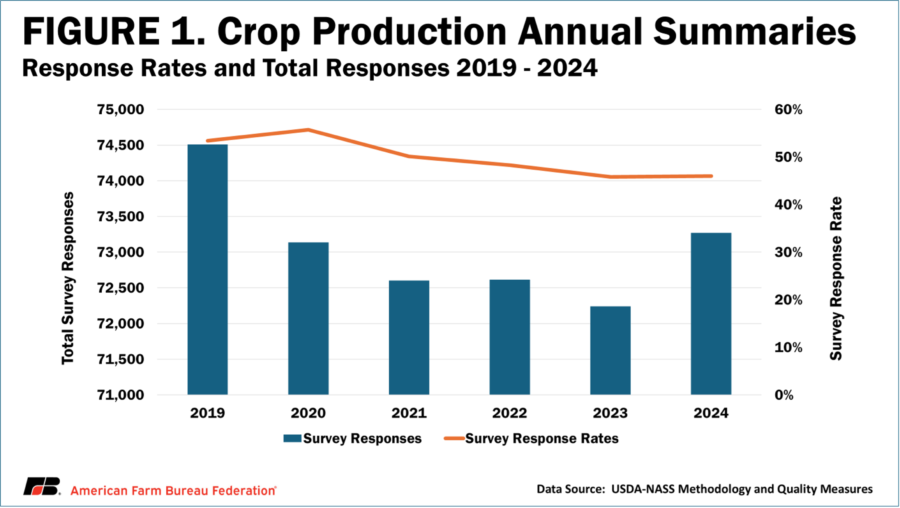By Bernt Nelson
Countless stakeholders including farmers, university Extension services, researchers and policymakers rely on the data USDA has collected for more than 150 years through agencies and programs including the National Agricultural Statistics Service (NASS) and the Economic Research Service (ERS).
An important element of research, price discovery and market integrity, good data is a critical part of a robust, well-functioning agricultural economy. USDA is considered the gold standard for data collection globally but decreasing responses to USDA’s farmer surveys is putting the integrity of this data at risk.
This Market Intel will evaluate the changes in response rates over time for several key surveys, with a focus on three NASS examples: the Crop Production Annual Summaries report, the March Cattle On Feed report and the November Farm Labor Survey.
It’s All About Data
Paid for by tax dollars, USDA’s data and reports are available to a massive number of public and private stakeholders.
USDA collects data in a variety of ways. For example, USDA’s Farm Service Agency (FSA) relies on producer-reported data during enrollment for programs such as Agriculture Risk Coverage and Price Loss Coverage. Other agencies, such as NASS, often rely on data collected through various surveys including USDA’s Census of Agriculture, which occurs every five years. NASS alone conducts hundreds of surveys every year, ranging from county-level production to cattle on feed.
Surveys Responses: Timing is Everything
One of the biggest challenges to getting good survey response rates is timing. Unfortunately,many survey collection periods overlap with farmers’ busiest times. For example, leading up to the June 30 planted acreage report, NASS contacted nearly 92,000 farmers across the nation to collect data to determine planted crop acres as of June 1. This overlaps with the end of planting season and spraying season for many row crop farmers. This survey is critical because it helps determine expected acreage, the foundation for estimating future supply for several major U.S. commodities. The weaker the survey response rates, the less accurate the data.
Crop Production
Estimates for row crop acreage and production come from USDA’s quarterly Agricultural Production survey issued in March, June, September and December in all states other than Hawaii. This data, published in the Crop Production Annual Summaries, is used widely due to the wide swath of information it contains. It is used by farmers to make decisions about marketing or storing grain, financial institutions for analyzing credit decisions, industry analysts for developing forecasts and many more. This makes data integrity crucial. Response rates for these surveys have fallen from 80%-85% in the 90s to just 46% in 2024. Notably, between 2019 and 2024 the response rate dropped below 50% for the first time with fewer than 74,000 responses out of an average of 148,000 surveys issued since 2020 (Figure1).

Click here to see more...